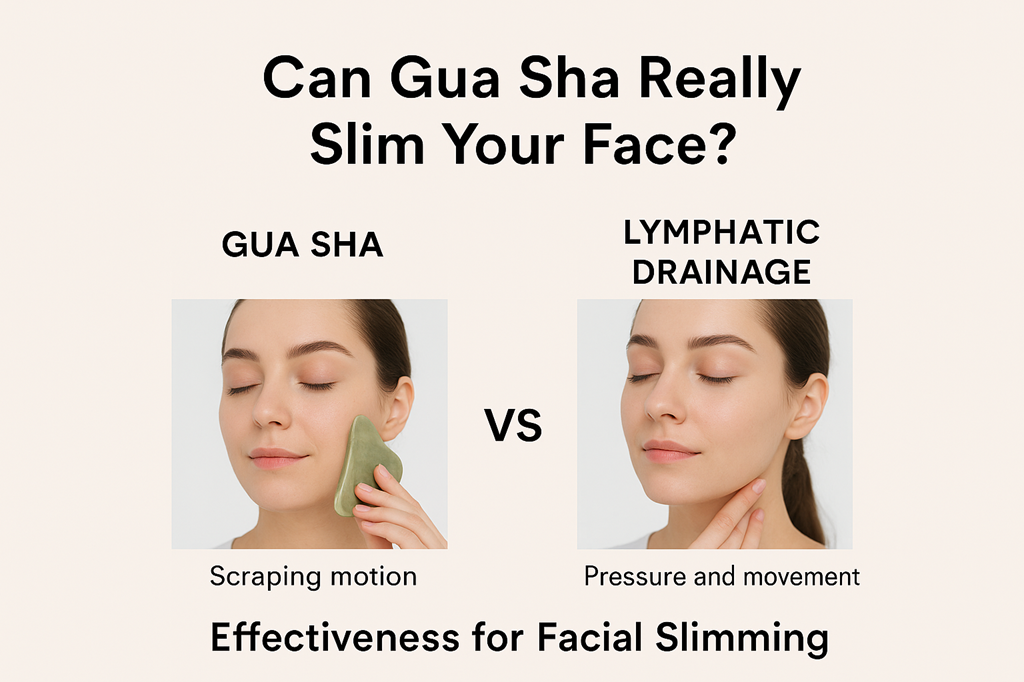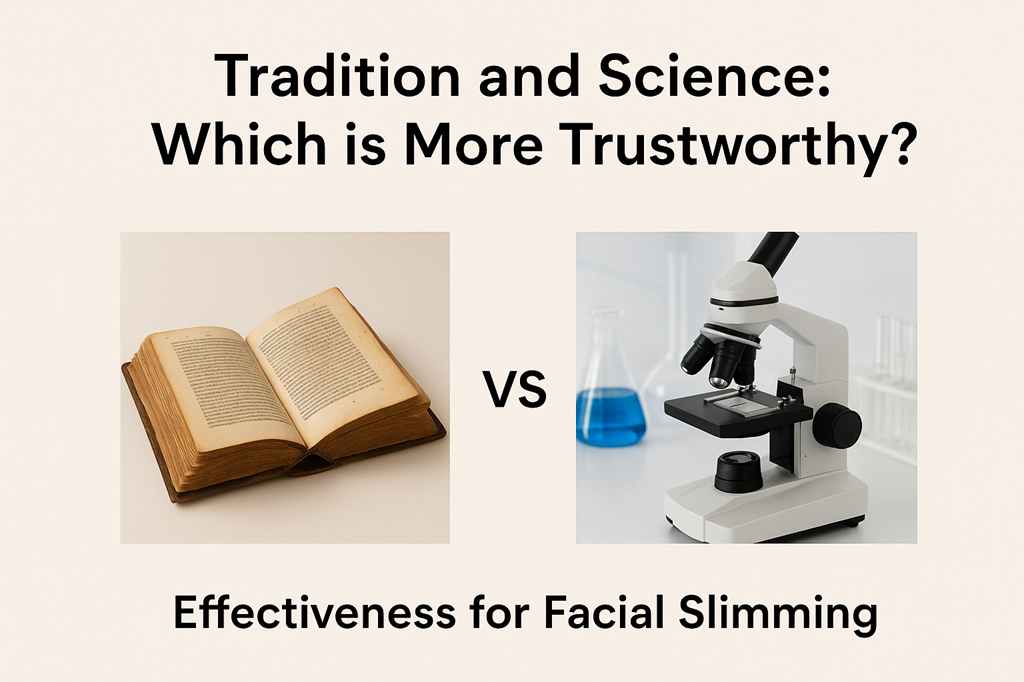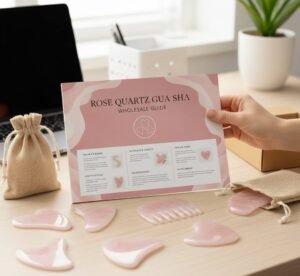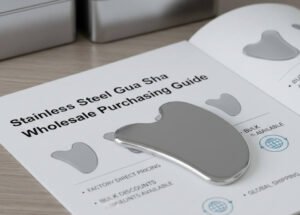
Gua Sha, an ancient Chinese healing method, has seen renewed vitality. Across social media platforms, it’s become a new beauty trend. Whether on Instagram, Pinterest, or YouTube, guasha is ubiquitous. Among the most popular videos are those showcasing facial Gua Sha. Bloggers use various jade scrapers to push and pull on the face, claiming they can “detoxify,” “slim the face,” and “lift the contours.” This seemingly similar approach to facial lymphatic drainage massage.
But what exactly is the relationship between guasha and lymphatic drainage? What’s the scientific basis for this claim? This is the topic we’ll explore today.
- Gua Sha and Lymphatic Drainage: Like Sisters, Yet Different
- Tradition and Science: Which is More Trustworthy?
- Gua Sha Safety and Contraindications
- Summarize
Gua Sha and Lymphatic Drainage: Like Sisters, Yet Different
Many people consider Gua Sha to be one of the many techniques within lymphatic drainage massage, and indeed, the two share many similarities. However, this doesn’t mean that guasha is a separate branch of lymphatic drainage massage. Rather, they should be considered equivalent:
- Goal: Both emphasize detoxification, swelling reduction, and a more refined and refined facial appearance. However, this is only one of Gua Sha’s benefits—facial beauty. Gua Sha’s primary and most traditional function is more focused on health and wellness. Therefore, the goals of guasha and facial lymphatic drainage overlap, but they are not completely equivalent.
- Differences in Method: Facial lymphatic drainage massage is mostly performed with bare hands. The masseuse uses their hands to massage and unclog the lymphatic ducts. guasha, on the other hand, requires the use of tools, using friction and pressure against the skin to achieve the desired flow and drainage effects.
- Differences in Experience: Gua Sha is more irritating, and may leave temporary redness on the face. Lymphatic drainage, on the other hand, is much gentler.
So there are still obvious differences between the two. As for how to choose, you need to decide based on your actual needs. If you are looking for immediate results and an immediate firming feeling on your face, guasha is more suitable. But if you want to try a gentle daily care, Lymphatic Drainage Massage would be a better choice.
Tradition and Science: Which is More Trustworthy?

As we all know, Gua Sha originated in China and has a history spanning thousands of years. It holds a profoundly important place in the hearts of the Chinese people. According to traditional Chinese medicine, guasha’s benefits stem from:
- Unblocking Qi and blood, promoting balanced circulation in the body.
- Eliminating harmful substances from the body, maintaining good health.
- Gua Sha expels excess heat or cold from the body, achieving a balanced Yin and Yang.
However, modern medicine has different explanations for this, and there are obvious differences between the two:
- Some studies have shown that gua shacan indeed promote local microcirculation and aid blood and lymphatic flow, which is why some people find relief from shoulder and neck discomfort after guasha.
- For pain management, particularly chronic neck and back pain, there’s some clinical evidence supporting the effectiveness of gua sha.
- However, claims like “long-term face slimming” and “changing facial structure” are not supported by sufficient scientific research, and are primarily focused on reducing swelling in the short term.
Although there are some differences between traditional and scientific theories, guasha is effective in improving circulation and relieving tension in the body.
Gua Sha Safety and Contraindications
Although Gua Sha is considered a relatively safe treatment method, it is a non-invasive treatment with no toxic side effects. However, guasha is not absolutely safe and there are still many contraindications and common risks that need to be noted:
Common risks of Gua Sha:
- Subcutaneous bleeding, bruising, or skin allergies: These are caused by friction between the gua sha tool and the skin. These symptoms usually subside quickly.
- Skin infection: These symptoms can occur primarily due to trauma or acne in the area being scraped, and improper cleaning of the gua sha tool before use. This can allow bacteria to enter the body through the wound during guasha, leading to infection.
- Skin damage or even fibrosis: This is caused by excessive force during gua sha. Therefore, when doing guasha, don’t aim for “sha” (a type of skin irritation)—use your gua sha technique based on your physical condition.
- Symptoms of palpitations and heart palpitations: This is because gua sha increases blood flow in the body for a short period of time, potentially irritating the heart.
- Symptoms of a cold or fever after guasha: This is caused by inadequate protective measures. It’s important to stay warm after gua sha and avoid showering for a short period of time.
Taboos-People Who are Not Suitable for Gua Sha
- Pregnant women and menstruating women. Gua Sha increases blood flow, which can pose risks.
- People with wounds and acne can easily cause secondary damage and infection.
- People with blood disorders or those taking anticoagulants may experience worsening symptoms under the skin where Gua Sha was applied.
- People who have recently received cosmetic injections (such as Botox or hyaluronic acid) should wait at least several weeks.
Gua Sha Safety Tips
- Before gua sha, always apply a lubricant to reduce friction. Essential oils, body lotions, and other lubricants are recommended.
- Select the intensity of the guasha according to your specific body condition and area. Don’t aim for “the more sha, the better.”
- After gua sha, keep warm to avoid catching a cold or other virus.
- Clean the tools thoroughly before and after gua sha to prevent cross-infection.
- Gua Sha should be used in moderation and should not be overused. This does not apply to facial guasha, which can be used daily.。
Summarize
Gua Sha and lymphatic drainage do share many similarities, but they are not mutually exclusive. They are rather equivalent. While their functions overlap, they also possess their own distinct characteristics.
Regardless of their differences in efficacy, safety considerations are crucial when using them. Don’t blindly use them; always rely on scientific advice and seek professional advice.






